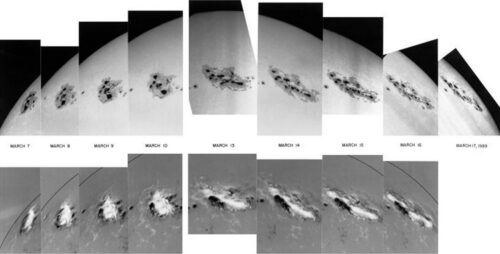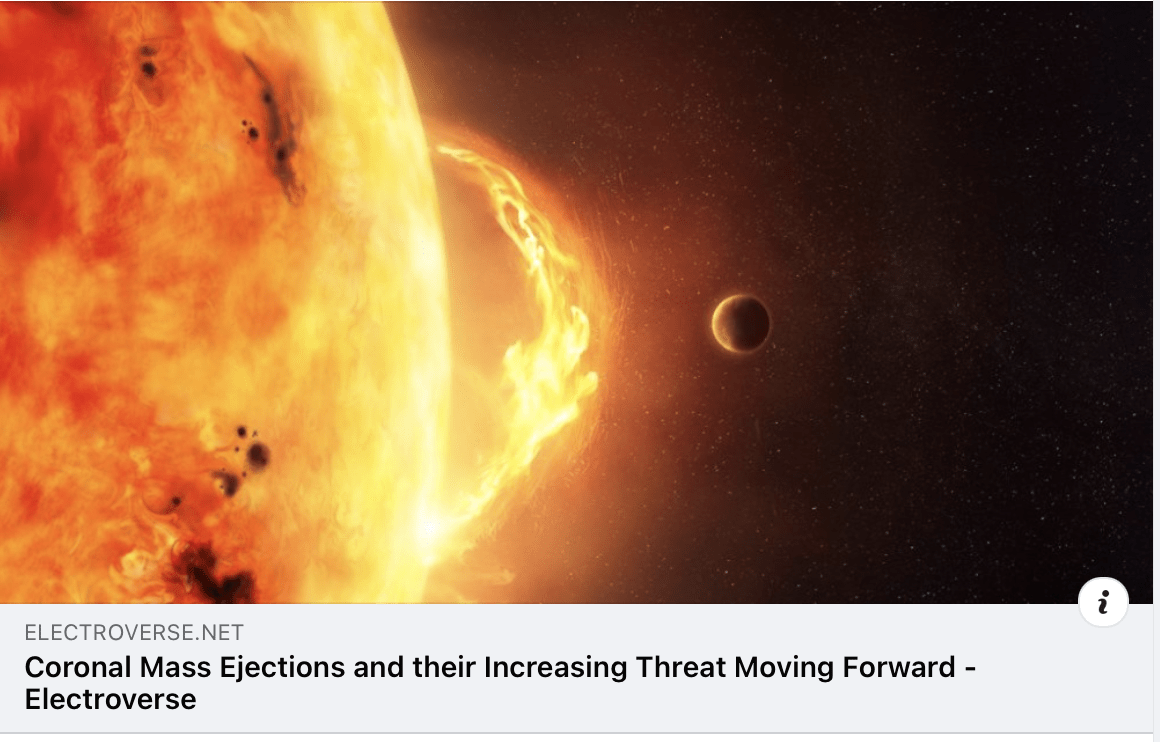
They call it “the day the sun brought darkness.” On March 13, 1989, a powerful coronal mass ejection (CME) hit Earth’s magnetic field. Ninety seconds later, the Hydro-Québec power grid failed. During the nine-hour blackout that followed, millions of Quebecois found themselves with no light or heat, wondering what was going on?
“It was the biggest geomagnetic storm of the Space Age,” says Dr. David Boteler, head of the Space Weather Group at Natural Resources Canada. “March 1989 has become the archetypal disturbance for understanding how solar activity can cause blackouts.”
Much is still unknown about the March 1989 event. It occurred long before modern satellites were monitoring the sun 24/7. To piece together what happened, Boteler has sifted through old records of radio emissions, magnetograms, and other 80s-era data sources. He recently published a paper in the research journal Space Weather summarizing his findings — including a surprise:
“There were not one, but two CMEs,” he says. More at Space Weather
In Sept. 1859, a similar CME hit Earth’s magnetic field–the infamous “Carrington Event“–sparking a storm twice as strong as March 1989. Electrical currents surged through Victorian-era telegraph wires, in some cases causing sparks and setting telegraph offices on fire. These were the same kind of currents that would bring down Hydro-Québec.
“When a CME hits Earth head on,” says Dr. Newmark, “the results could be catastrophic to modern human society.”
CMEs, or Coronal Mass Ejections, are enormous bursts of superheated gas (called plasma) ejecting from the sun. They are powerful eruptions driven by kinks in the solar magnetic field.
The plasma itself is a cloud of protons and electrons carried aloft by the solar wind. Travelling at over a million miles per hour (1.6 million kph), the ejecta can cross the 93-million-mile (150-million-km) distance to Earth in as little as 8 hours. The resulting shocks ripple through the solar system and can interrupt satellites and power grids here on Earth.
“It could essentially shut down the Industrial Revolution,” says ecology.com’s Weather Ecology Specialist, Frank Billingsley. “If so much of our technology and electrical systems along with the plants that supply them are shut down, then we are going to go back to the time of the Industrial Revolution.” Electroverse.net
